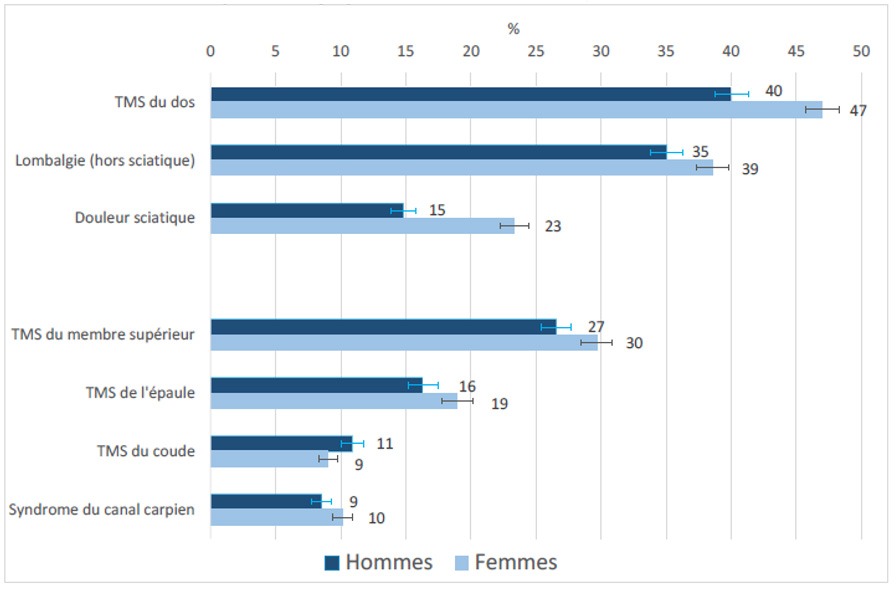Published on
Updated
Reading 1 min.
Back, shoulders or even wrists, musculoskeletal disorders have a “significant weight” in France, where nearly 60% of women and half of men report pain linked to these MSDs, according to a study released Thursday by Public Health France .
Some 58% of women and 51% of men aged 18 to 64 report pain linked to MSDs of the back or upper limb, which, with other data, confirms “the significant burden represented by MSDs”, observes the health agency.
For employed workers only, the data is comparable (60% among women, 54% among men), according to its 2021 health barometer, a large telephone survey by random sampling on health behaviors over the previous 12 months.
Musculoskeletal disorders include various diseases of the musculoskeletal system (muscles, tendons, nerves, joints) which result in pain and discomfort, often daily, caused or aggravated by work.

They constitute the leading cause of occupational illness: 88% of pathologies compensated by the general health insurance scheme. The most commonly reported MSDs are low back pain excluding sciatica in the back, and MSDs of the shoulder in the upper limb.
For two very common disorders, carpal tunnel syndrome and low back pain, surgical interventions have remained “relatively stable” in number since 2018 (124,011 and 20,971 respectively in 2022).
From 2018 to 2022, however, the incidence rate decreased for lumbar disc herniation. For carpal tunnel syndrome, it decreased in women and slightly increased in men.
Socio-professional inequalities are confirmed: the frequency of MSDs of the back and upper limb is higher among farmers and workers (for both sexes), artisans, traders and business leaders (for men), employees (among women).
It is lower among executives and higher intellectual professions.
Certain sectors are more at risk: manufacturing and construction come first among men, human health and social action among women.
Public Health France recommends “priority targeting” these sectors “for prevention campaigns”.
Adapting jobs, work organization or limiting psychosocial risks are among the recommended actions. Reducing a sedentary lifestyle is also recommended.
